If there’s one food that notoriously rots too quickly, it’s lettuce, kale, and other delicate leafy greens. We’ve all been there: you buy the lettuce (or kale or other leafy green) at the store or farmer’s market, the leaves are vibrant and full of possibility, then you come home and stick that head of lettuce in the fridge and days later find all the leaves rotting in the fridge. NO!!!! The worst feeling.
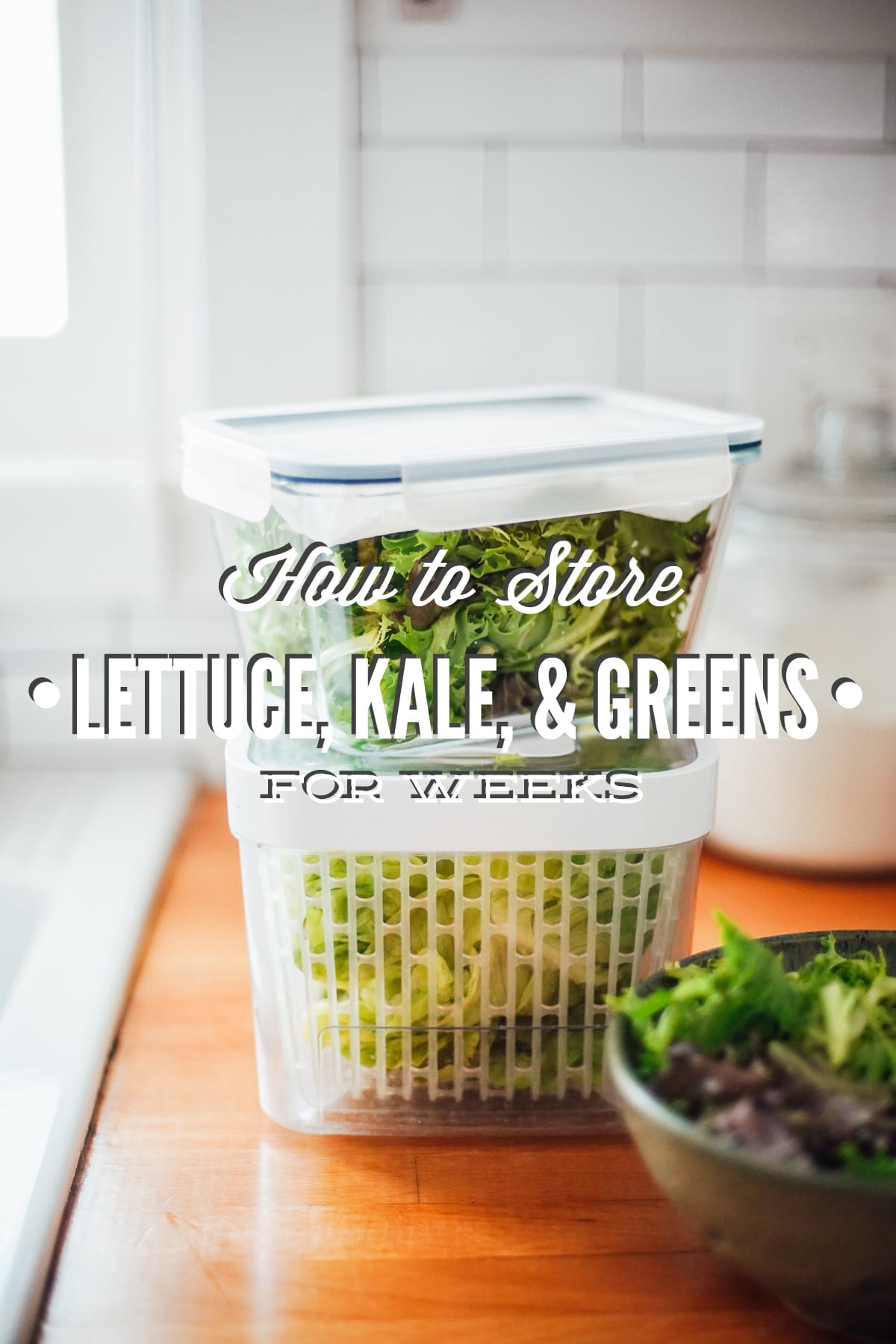
Want to Save This Article?
Enter your email & I’ll send it straight to your inbox. And you’ll get new recipes & tips each week.
Today, the bulk of my of grocery shopping is done at the farmer’s market (see my farmer’s market hauls on Instagram).
The majority of our food is fresh, just-picked-from-the-field. Due to this way of shopping, I’ve learned how to store fresh food in order to make that food last for at least a week and usually a bit longer.
I’d love to share my favorite ways to store leafy greens (lettuce, kale, and other leafy greens) with you. Each method (there are 3 that work really well) keeps lettuce, kale, and other greens fresh and crisp for at least a week in the fridge, and usually much longer!
When I mention leafy greens, I’m talking about: lettuce (any variety), Swiss chard, collard greens, spinach, arugula, mustard greens, baby greens, beet greens, carrot tops, dandelion greens, etc. Herbs are not in this category and need to be stored differently. I shared how to store herbs in this post.
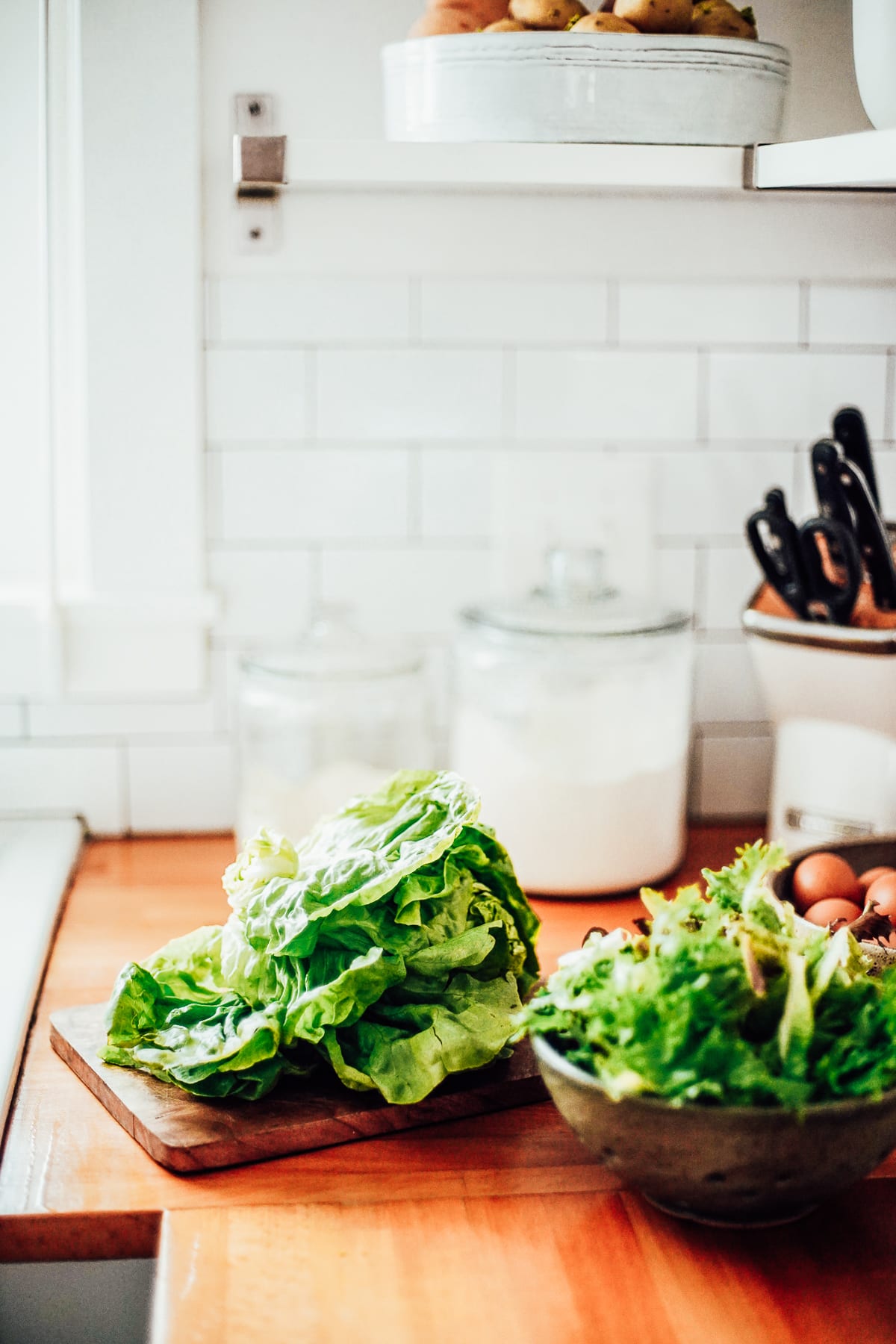
What to Look for When Buying Leafy Greens
First, it’s important to point out that no matter how you store a head of lettuce or other leafy green, a bad head of lettuce is just that. No method will delay the inevitable if your lettuce has already gone bad. It’s important to buy the freshest lettuce, kale, and other leafy greens. Here’s what to look for when buying lettuce and other leafy greens…
- vibrant and loose greens: Vibrant green leafs that are crisp and not wilted or yellowing and preferably greens that aren’t packed in plastic bags or compact containers (go for the loose heads of lettuce and other greens).
- for bagged greens, such as baby greens: I get it. There are times when the only option is something in a bag or sealed bin. In this situation, pick up the bag or bin and inspect all sides, moving the greens, looking for any indication of too much moisture or rotting greens (very dark, light yellow, and/or slimy greens)
- choose organic when possible for spinach, kale, collards, and mustard greens: According to the EWG, those particular greens contain the highest level of pesticides out of all fruits and veggies and since lettuce and greens don’t have a peel, it’s best to go organic.
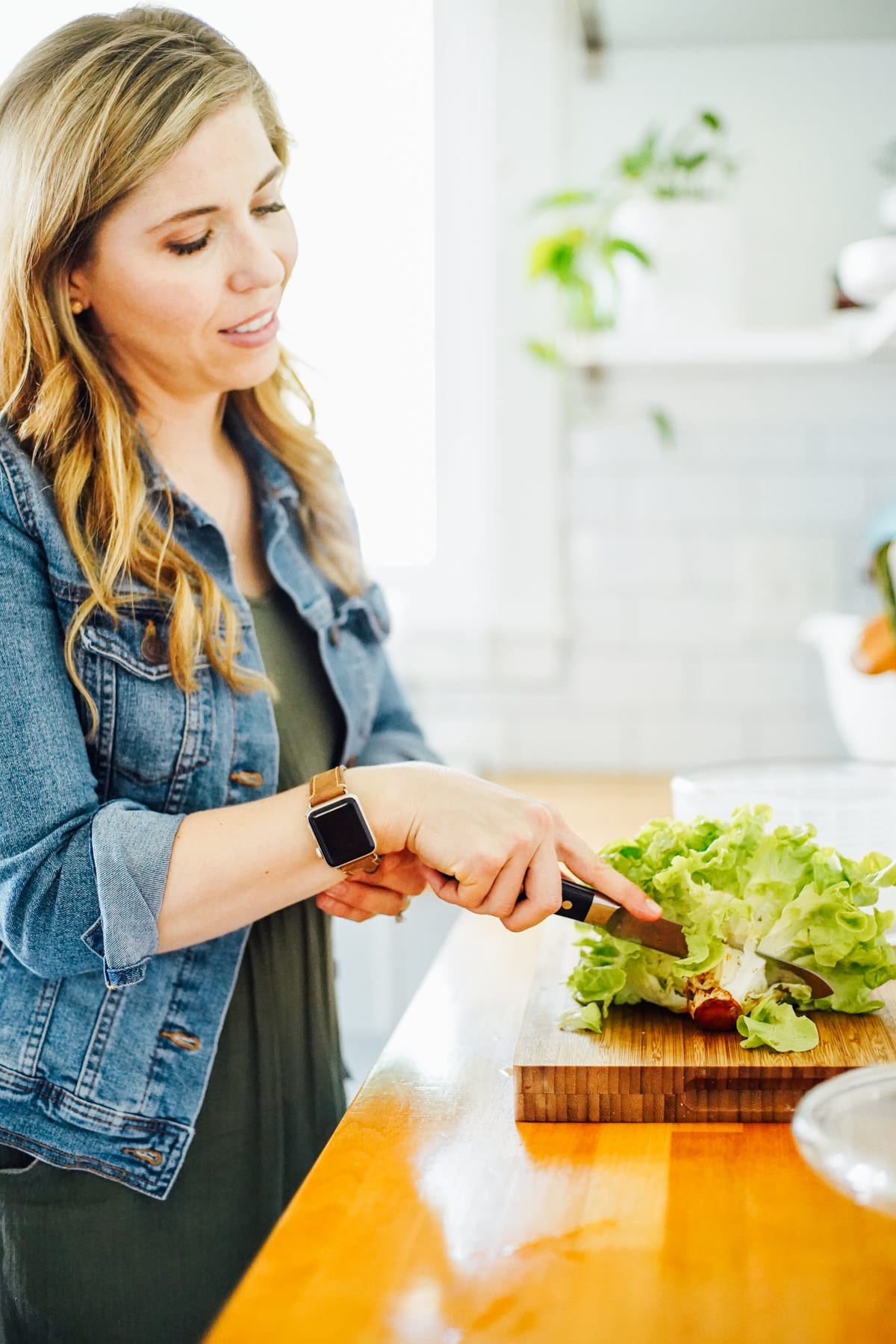
How to Keep Lettuce, Kale, and Leafy Greens Fresh for Weeks
There are two key factors to keeping lettuce, kale, and other leafy greens fresh for at least week or longer: moisture and air.
- Greens need air flow. This means not packing your greens into a bag or container too tightly (and this is why I recommend buying loose greens when possible, not those packed in sealed bags or bins). Think about making a roomy environment for the greens, where the air can circulate.
- Greens need some moisture, but too much moisture is the enemy and will cause the greens to rot prematurely. This is why you don’t want to wash delicate greens in advance, only when you need them. I’ll share how to wash greens the quick and easy way later in this post.
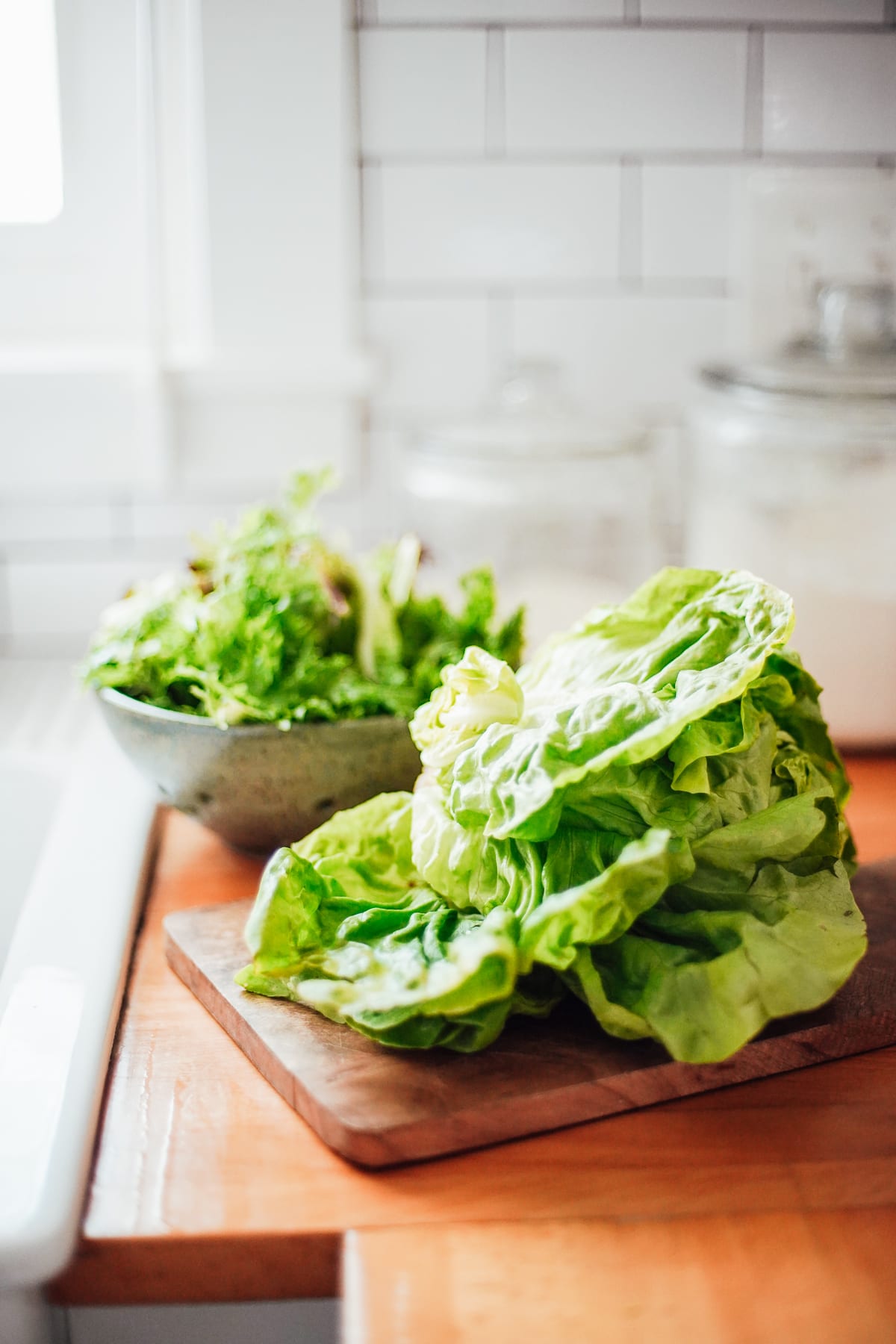
How to Store Lettuce, Kale, and Leafy Greens
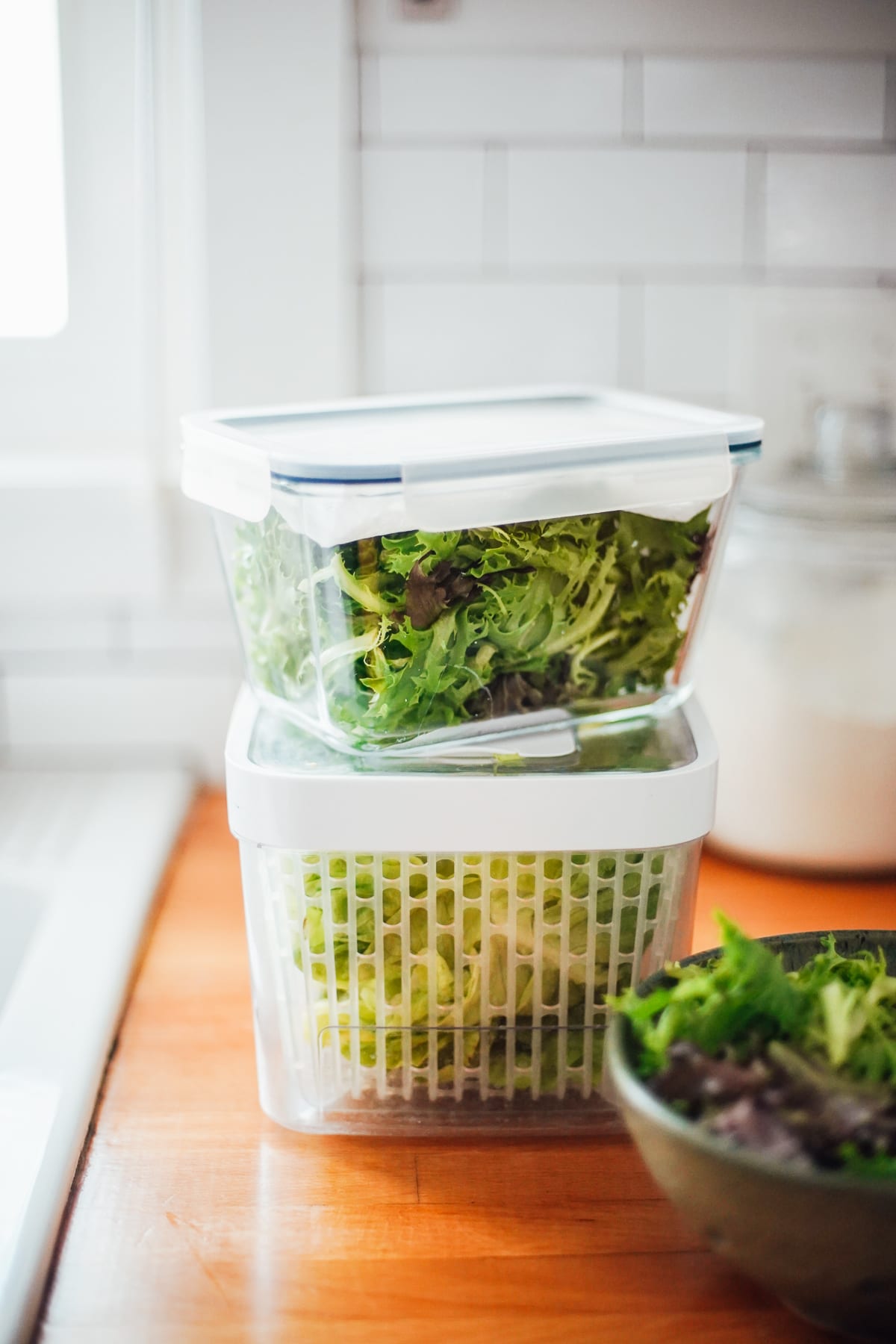
Method 1: Store Lettuce and Greens in a Ziplock Bag
For this method, you’ll need a gallon-size Ziplock bag (or you can use a silicone bag like a Stasher Bag) and a paper towel.
Place the greens in the bag (separating the leaves if you’re working with a whole head of lettuce or other leafy greens), making sure not to pack the leaves too tightly (the greens need airflow). Once the greens are in the bag, place a paper towel on one side of the bag. The towel will soak up extra moisture, keeping the greens from getting too wet which causes premature rotting and slimy greens. Seal the bag (you don’t need to take all of the air out of the bag) and place in the fridge. Store for up to 1 week, sometimes longer.
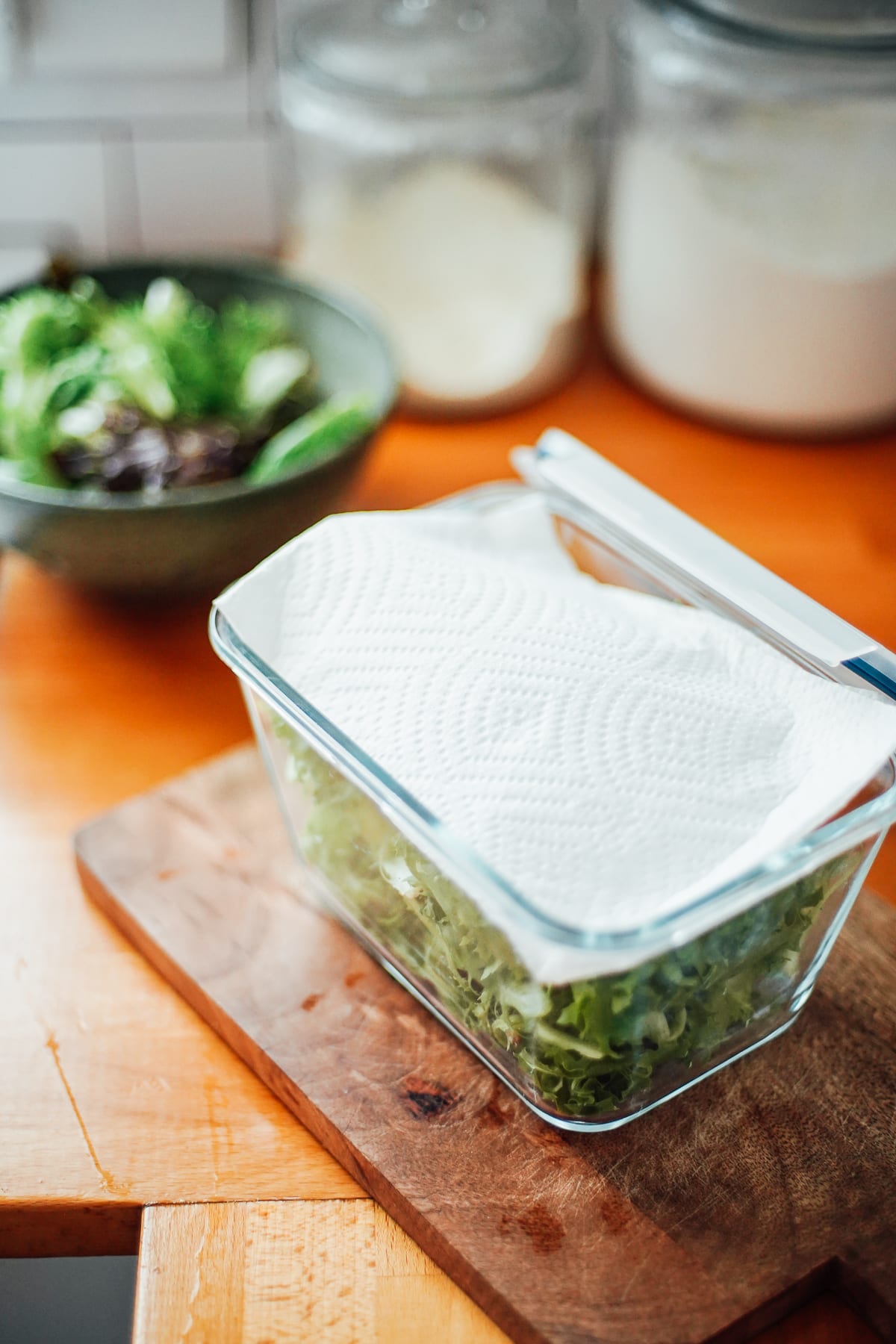
Method 2: Store Lettuce and Greens in a Special Produce Bin
For this method, you’ll need an OXO Green Saver Produce Keeper (I use the medium size, not sponsored–I’ve used these bins for years and LOVE them).
The produce keepers keep too much moisture from settling on the greens, while keeping the air circulating, and use a charcoal filter to absorb the gases that cause the greens to rot prematurely. Simply place the greens inside the Produce Keeper (separating the leaves if you’re working with a whole head of lettuce or other leafy greens), place the lid on, and store in the fridge. I haven’t replaced the charcoal filters in years (I’ve tossed them at this point) and my bins still work fantastic for storing greens. This is my go-to method. My greens last about 2 weeks using this method.
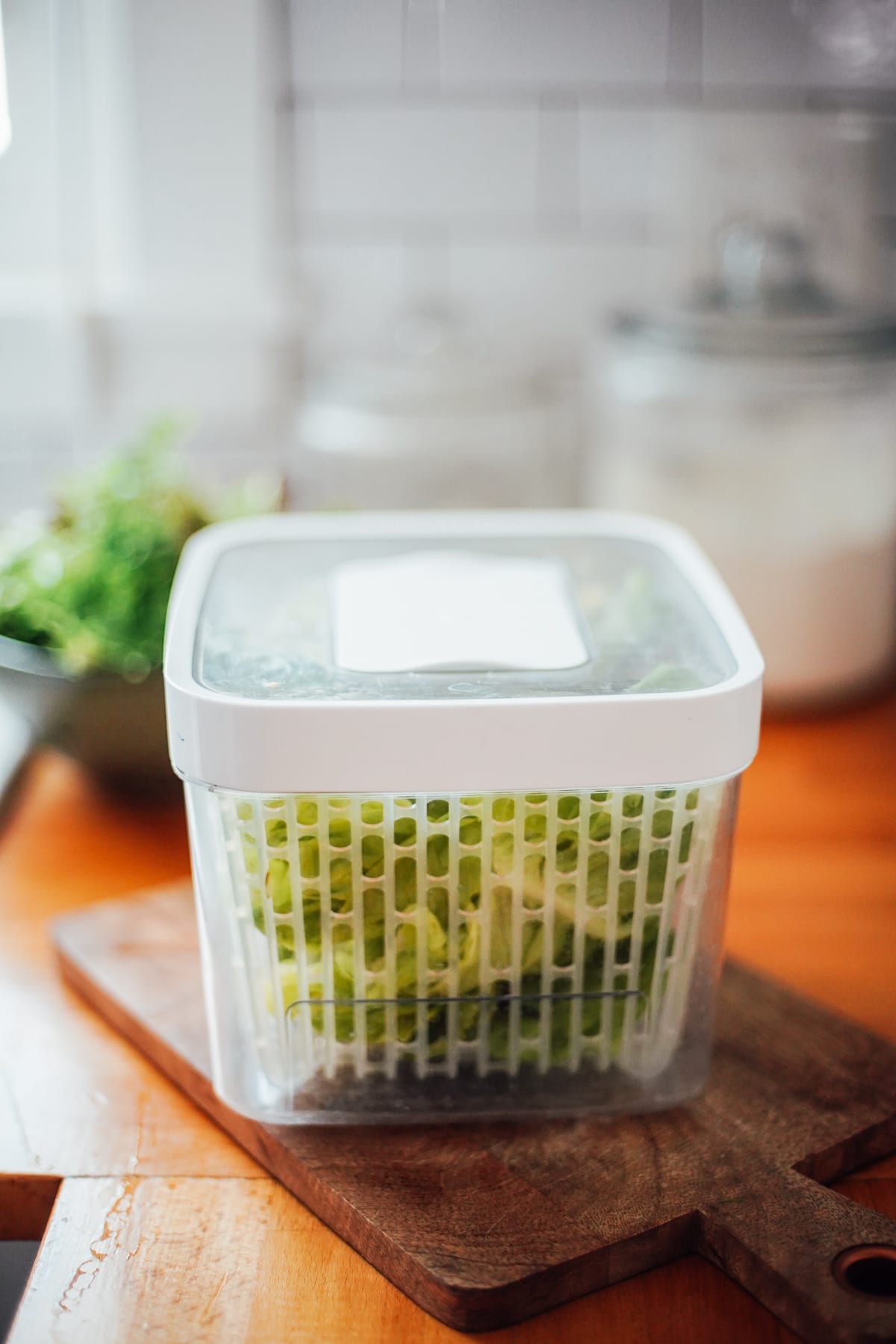
Method 3: Store Lettuce and Greens in a Glass Container
For this method, you’ll need a large glass container (I like the 11-quart size from Pyrex) and paper towel.
Place the lettuce in the container (separating the leaves if you’re working with a whole head of lettuce or other leafy greens), making sure not to pack the leaves too tightly. Place the paper towel on top of the greens, then place the lid on the container. Store the container in the fridge for up to a week, usually longer.
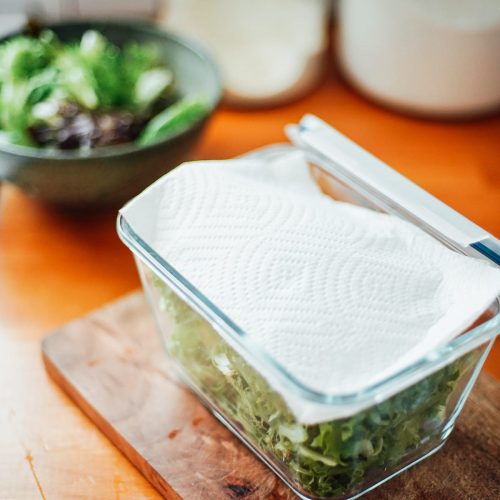
How to Store Lettuce, Kale, and Other Leafy Greens
Ingredients
Method 1: Store Lettuce and Greens in a Ziplock Bag
- gallon-size ziplock bag
- paper towel
Method 2: Store Lettuce and Greens in a Special Produce Bin
Method 3: Store Lettuce and Greens in a Glass Container
- glass container
- paper towel
Instructions
Method 1: Store Lettuce and Greens in a Ziplock Bag
- Place the greens in the bag (separating the leaves if you’re working with a whole head of lettuce or other leafy greens), making sure not to pack the leaves too tightly (the greens need airflow). Once the greens are in the bag, place a paper towel on one side of the bag. The towel will soak up extra moisture, keeping the greens from getting too wet which causes premature rotting and slimy greens. Seal the bag (you don’t need to take all of the air out of the bag) and place in the fridge. Store for up to 1 week, sometimes longer.
Method 2: Store Lettuce and Greens in a Special Produce Bin
- The produce keepers keep too much moisture from settling on the greens, while keeping the air circulating, and use a charcoal filter to absorb the gases that cause the greens to rot prematurely. Simply place the greens inside the Produce Keeper (separating the leaves if you’re working with a whole head of lettuce or other leafy greens), place the lid on, and store in the fridge. I haven’t replaced the charcoal filters in years (I’ve tossed them at this point) and my bins still work fantastic for storing greens. This is my go-to method. My greens last about 2 weeks using this method.
Method 3: Store Lettuce and Greens in a Glass Container
- Place the lettuce in the container (separating the leaves if you’re working with a whole head of lettuce or other leafy greens), making sure not to pack the leaves too tightly. Place the paper towel on top of the greens, then place the lid on the container. Store the container in the fridge for up to a week, usually longer.
Video
Don’t let it rot!
FREE PRODUCE GUIDE
21 Storage Hacks to Keep Your Produce Fresh
How to Wash Lettuce, Kale, and Leafy Greens
Only wash your leafy greens when you need to use the leaves. There are 2 ways to quickly and easily wash greens.
For salads and greens that you’ll be sautéing or baking with and don’t want any moisture on the greens, the best way to wash leafy greens is to use a salad spinner:
- Add the amount of greens you’d like to use to a salad spinner (here’s my favorite).
- Fill the salad spinner base with cold water to cover the greens.
- After a few minutes of soaking, remove the salad spinner basket insert and dump out the water from the base of the spinner.
- Rinse greens under fresh cold water and then return the basket to the base of the salad spinner.
- Give the spinner a few good spins, emptying water as needed until the greens are dry.
For smoothies and other meals in which some moisture is completely fine (the moisture isn’t going to mess with a salad dressing or sautéing the greens), run the desired amount of greens under fresh cold water. There’s no need to dry the greens before use in this case.
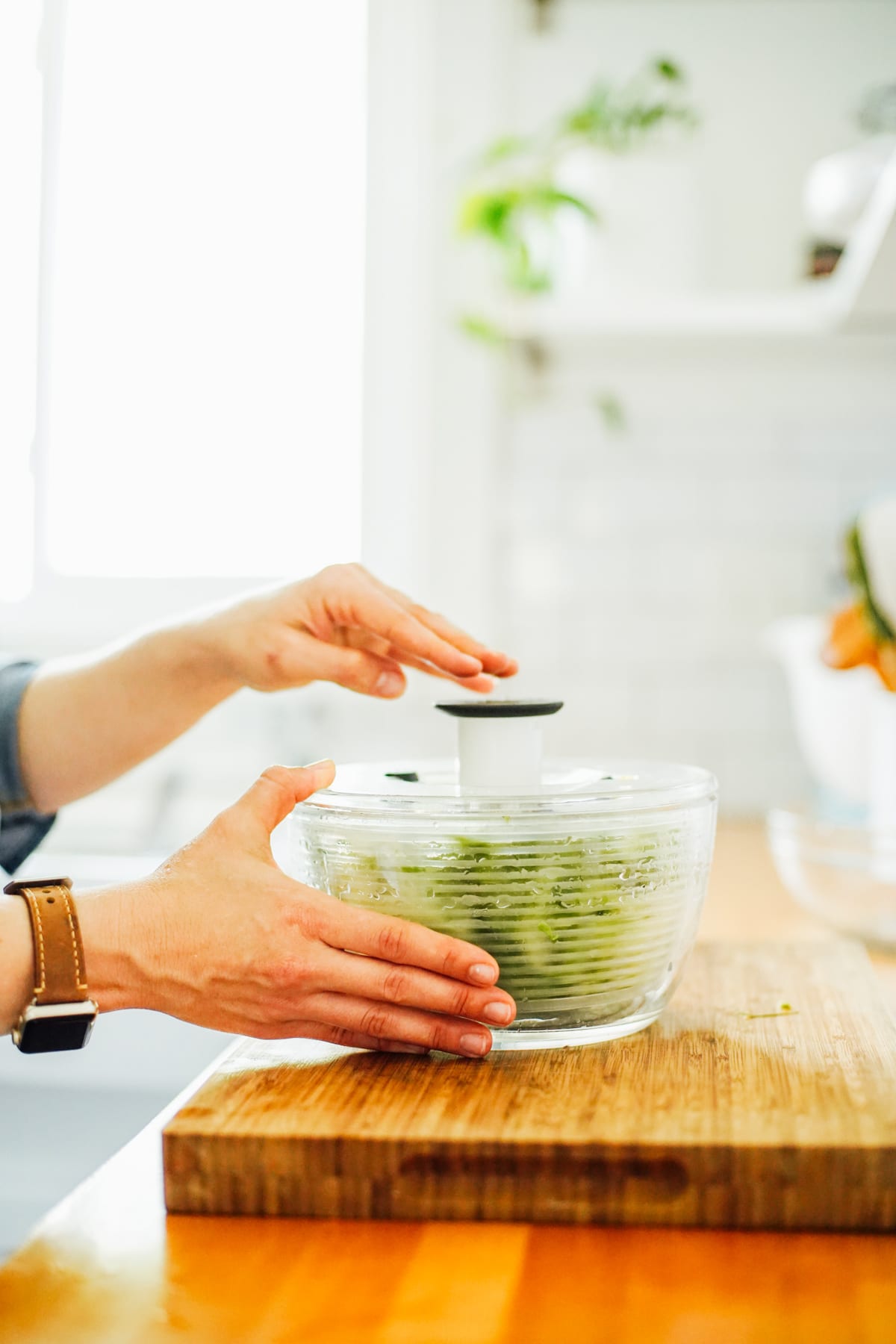
How to Use Lettuce, Kale, and Other Leafy Greens
Now that you’ve successfully stored your leafy greens for at least a week, probably even longer, and then washed the greens in a quick and easy way, here are are a few of my favorite ways to enjoy lettuce, kale, and other leafy greens…

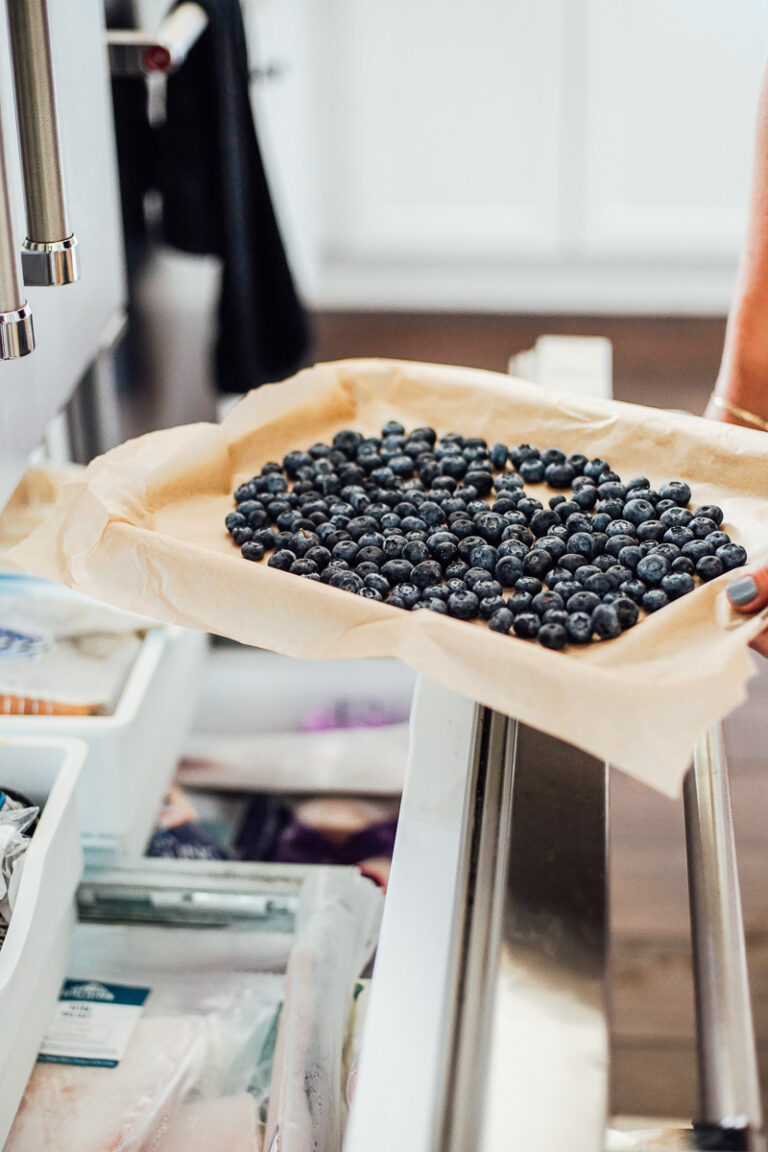
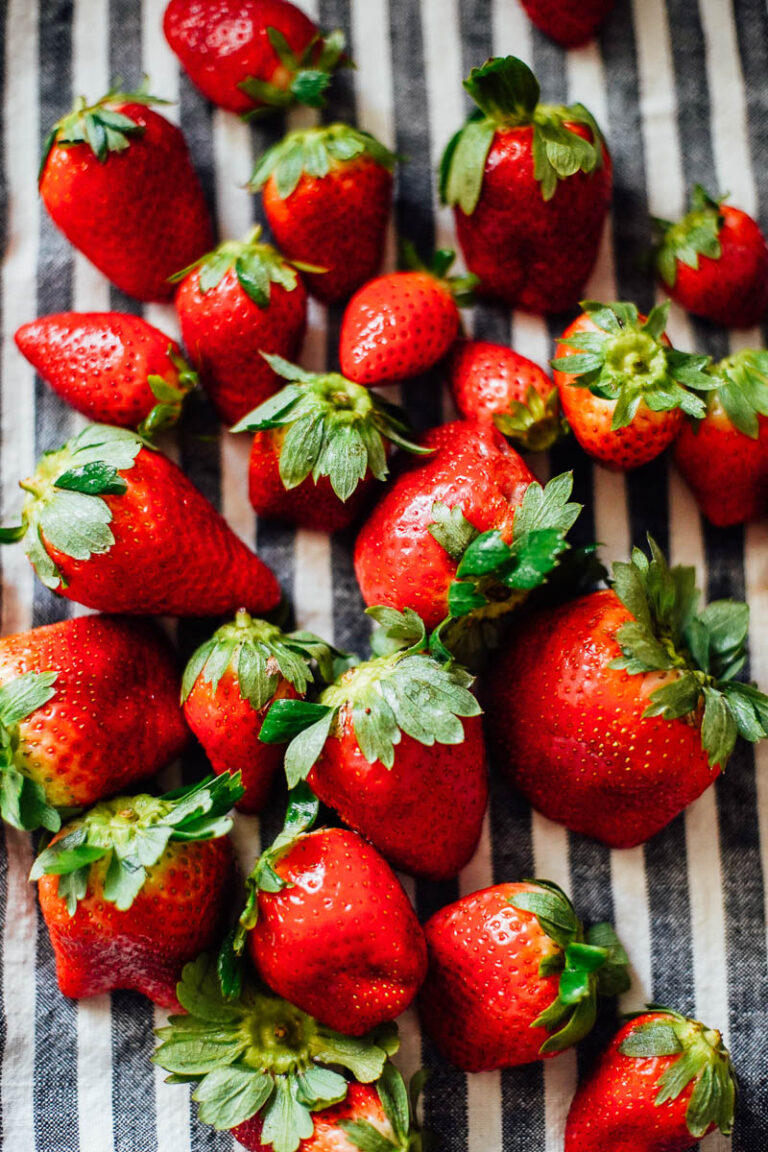
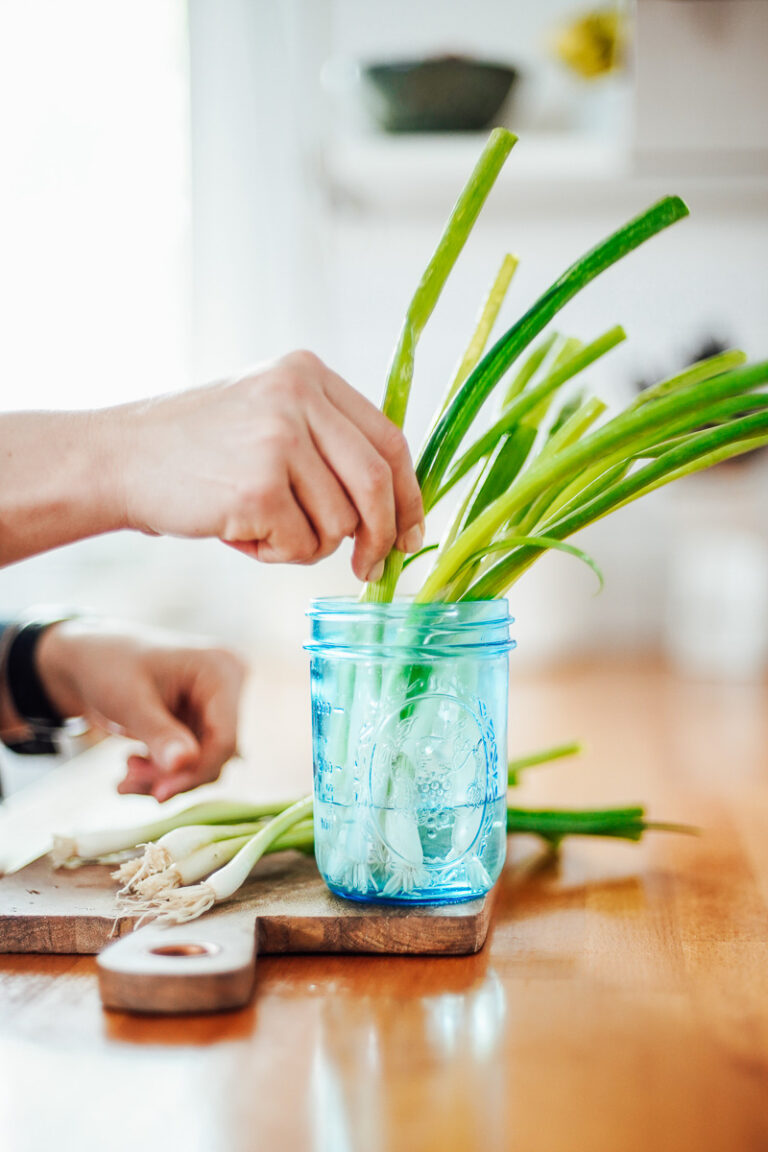
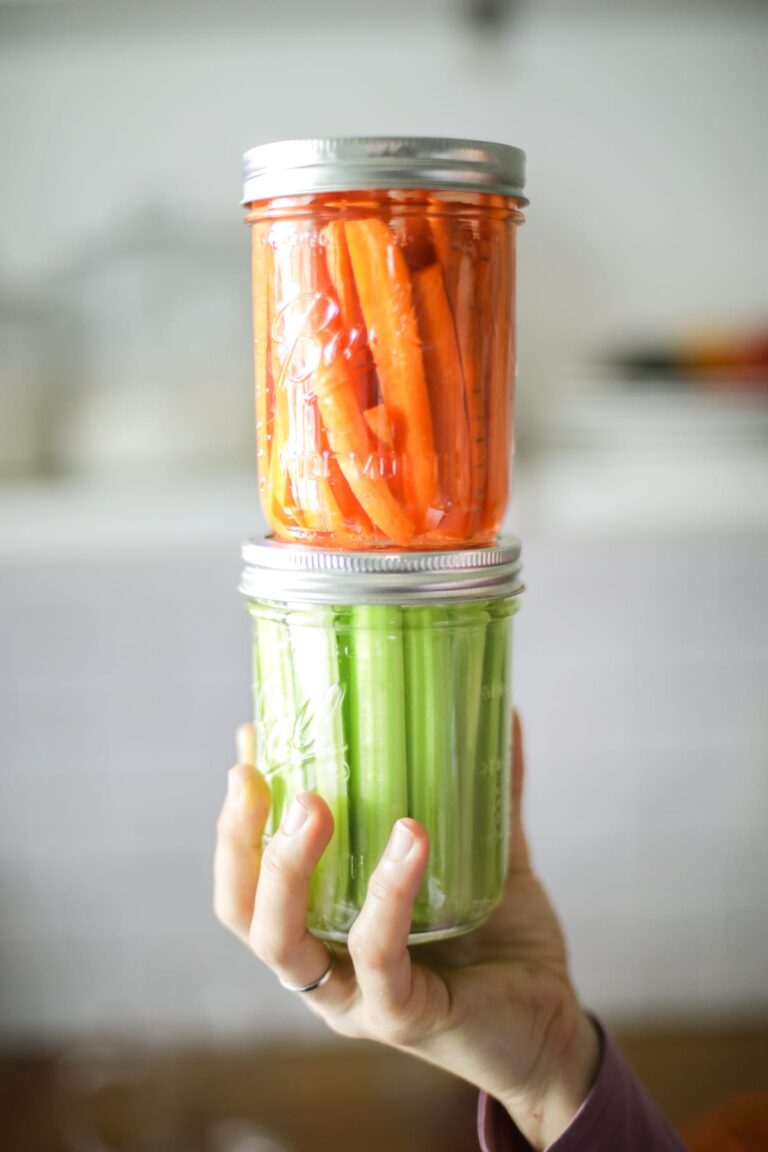
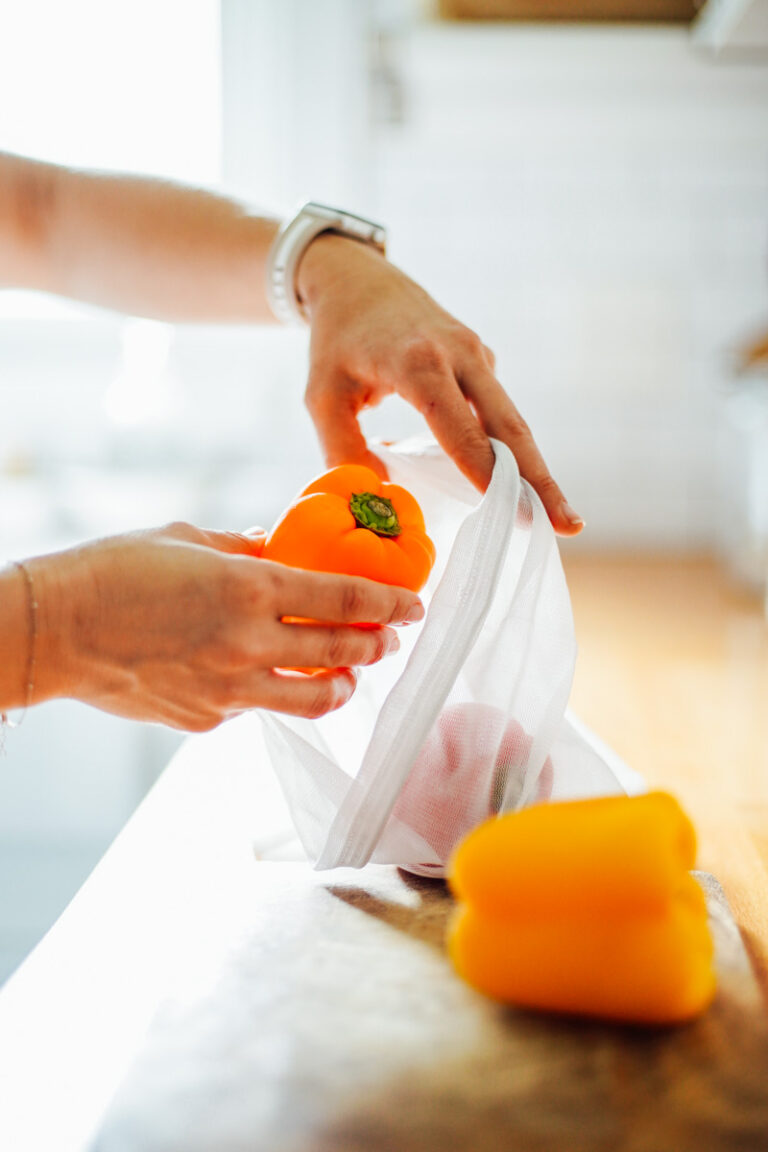
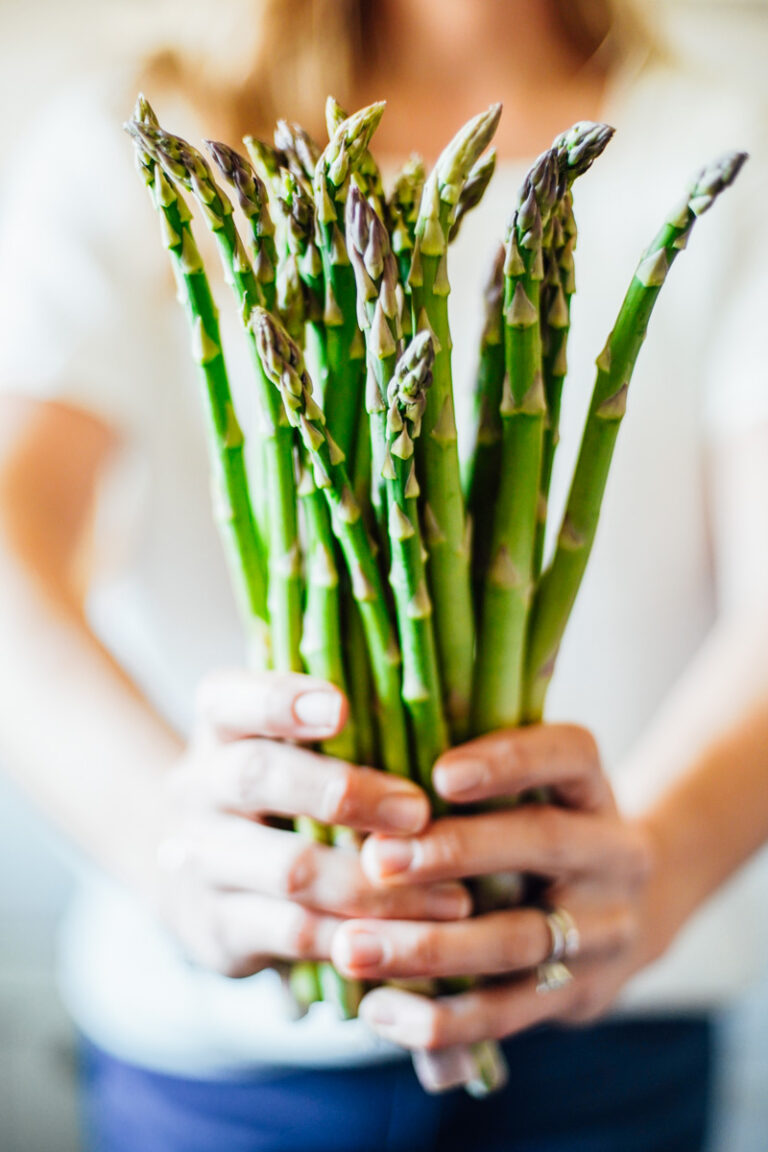
Hi! Do you recommend cleaning wood cutting boards with a dilution of sal suds dish soap?
Hey Sarah, Yes, you can do that. Here’s how I clean and deodorize my cutting boards: https://livesimply.me/naturally-clean-deodorize-disinfect-cutting-board/